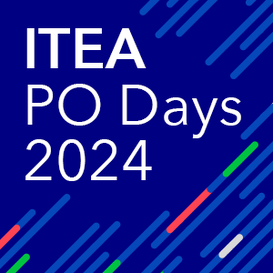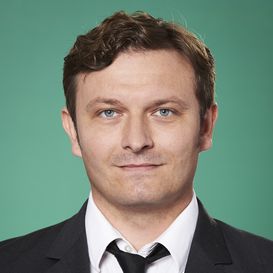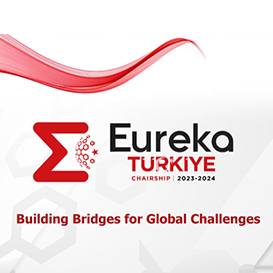RaySearch Laboratories AB
Bringing machine learning to radiation therapy
Radiation therapy and artificial intelligence may not be typically linked in the minds of the general public, but cancer treatment is one of the most important and innovative applications of machine learning technology. As the Director of Machine Learning at RaySearch Laboratories AB, Fredrik Löfman discusses how their AI applications speed up treatment planning and how their experience and expertise have contributed to the ongoing ITEA project ASSIST.

Always evolving
Founded in 2000 as a spin-off of the Karolinska Institute in Stockholm, RaySearch Laboratories AB has since evolved into a global player with subsidiaries in Europe, Asia, and the USA. At the centre of their work is RayStation, a treatment planning system that optimises care and has been installed in over a thousand clinics worldwide. In 2003, Fredrik came to the company as a PhD student working on the optimisation of radiation therapy, later joining RaySearch full-time to work on RayStation. After six years away in financial risk modelling, he returned to establish the machine learning department in 2017. Across four teams, 22 people work on the development of machine learning models for clinical use in the segmentation of medical image data, machine learning models for automatic treatment planning in radiotherapy, clinical input for model development and validation, and an oncology analytics system called RayIntelligence.
More time for patients
Radiation therapy treatment planning is a highly technical process. It starts with medical image acquisition, after which these images are imported into a treatment planning system to be segmented to present the 3D volumes of organs and target volumes. However, the manual or semi-automatic segmentation of medical images is extremely time-consuming. “This is where our first AI application comes in, which automatically segments organs and lymph node areas in the medical image data in less than a minute – currently down to 10 to 20 seconds,” Fredrik explains. “Our model catalogue consists of 130 different structures. This rapid segmentation allows users to focus on reviewing and fine-tuning the results, saving significant time compared to starting from scratch for each patient. Time savings per patient range from 15 minutes to over an hour, significantly improving clinic efficiency, especially for clinics handling thousands of patients annually.”
Every second counts
RaySearch’s second AI application concerns the creation of treatment plans for individual patients, which involves finding optimal treatment delivery parameters to deliver the radiation. Whereas traditional solutions deal with this iteratively – setting up optimisation functions, generating solutions, and refining the optimisation until the plan is approved – RaySearch automates it by using deep learning to predict the dose distribution based on user prescriptions and automatically triggering an optimisation problem to get as close as possible to the predicted dose. “This automated process usually takes only a few minutes, with optimisation time being the bulk of it. The result is an automatically generated treatment plan ready for review, refinement, quality assurance and delivery, saving considerable time,” says Fredrik. “By combining the two applications, the process from image acquisition to automatically generating a deliverable treatment plan can be significantly streamlined, allowing clinicians to focus on reviewing and refining the end result before approval.”
“One notable aspect is that we integrate AI functionality directly into the code base, allowing for incredibly fast processing without needing to transfer data elsewhere. This not only provides a fascinating technical capability but also offers clinical benefits, particularly for adaptive treatments where patients are waiting on the treatment couch during computations. Every second counts, and our ability to process data quickly sets us apart. And this emphasis on speed is central to the ASSIST project’s focus on automation and AI.”
Time savings per patient range from 15 minutes to over an hour, significantly improving clinic efficiency, especially for clinics handling thousands of patients annually.
First of a kind
ASSIST marks RaySearch’s first ITEA project and the motivation for this came initially from the opportunity to build partnerships with hospitals, universities, and other companies. But, as they dug into its details on optimising and simplifying image-guided therapy workflows, two aspects came to the fore: federated learning and automated workflows that use just magnetic resonance imaging (MRI). For the latter, they teamed up with fellow Swedish company Spectronic Medical to combine their software capabilities to achieve an MRI-only flow, thereby skipping the standard, time-consuming computed tomography (CT) scan.
Federated learning, meanwhile, is particularly relevant to industries with regulations and legal aspects that make it challenging to access data. Instead of bringing data to the AI algorithm, the AI algorithm goes to the data. Within ASSIST, RaySearch conducted a pilot to train their dose prediction model by splitting a dataset into different nodes and sending the algorithm to these nodes before combining the results into a model. “Now, we are involving Swedish university hospitals in this exercise, making it the first time a dose prediction model has been trained this way,” notes Fredrik. “Hospitals publish data for a certain treatment protocol, and we use our dose prediction algorithm to train on these nodes without the data leaving the hospital, ensuring privacy and regulatory compliance. Training on data from different hospitals also makes the model more robust than training on data from a single source.”
Positive partnerships
In addition to the work in their own field, Fredrik values the project’s insights into other areas of healthcare, including hardware to get a better view of patient geometry and the use of automation and AI in surgery. And although they were already accustomed to working with clinics in Europe, North America, and Asia-Pacific, involvement in ITEA added a new dimension to their work through collaboration with international companies and universities – something that Fredrik expects to have long-lasting benefits even after the project comes to a close in September 2024.
“The project management team, led by Philips, has done a superb job in driving this project efficiently and transparently despite involving a complex ecosystem of participants. It’s been a valuable experience witnessing such effective project management. We’ve also engaged in discussions with clinics and companies outside of Sweden, including hospitals that we have collaborated with before. Additionally, before this project, we had only limited contact with Linköping University, which is driving the Swedish part of the consortium. Establishing this connection has been very positive, and we anticipate continued collaboration with them after the project ends.”
The competitive edge
As for the ITEA experience, Fredrik is quick to highlight positive structural elements that helped make the project a success. “One notable aspect is its smooth project management and reasonable yet clear reporting setup. This has been a refreshing change from the overwhelming legal and reporting aspects often encountered in such projects,” he concludes. “Speaking on a personal level, European projects are incredibly important in the healthcare research field. In Sweden alone, we often lack the necessary resources to drive significant innovation. EU-wide projects therefore allow us to combine knowledge from various countries, resulting in innovations that can compete with those from America and Asia. Projects like in ITEA enable us to leverage diverse expertise and resources to achieve impactful results, ultimately contributing to Europe’s capability to compete internationally in healthcare innovation.”
More information:
https://www.raysearchlabs.com/
Other chapters
Use the arrows to view more chapters

Editorial
By Zeynep Sarılar

Country Focus: Finland
Software enabled digital transformation

Bittium
Where R&D is fundamental to business impact

ITEA Success story: CyberFactory#1
Addressing opportunities and threats for the Factory of the Future

Inclusivity and diversity driving innovation in the ITEA Community
Insights from the VMAP project

ITEA PO Days 2024 & Exhibition
Spark the next ground-breaking innovation!

Community Talk with Alexander Viehl
Motivated by real-life challenges and impactful solutions

SME in the Spotlight: RaySearch Laboratories
Bringing machine learning to radiation therapy

ITEA Topical roadshow
Your voice, your topics, inspiring the ITEA Community

ITEA Success story: PAPUD
A unified approach to heterogenous data

Labelled ITEA Call 2023 projects
Strong focus on Healthcare and generative AI

End user happiness: VMAP analytics
Energy-saving furnace control enhances sustainability and quality in the steel industry

Global Innovation Summit 2024
Building bridges for global challenges

